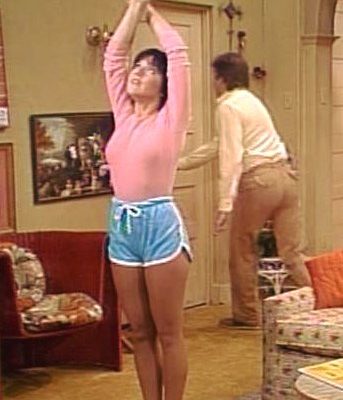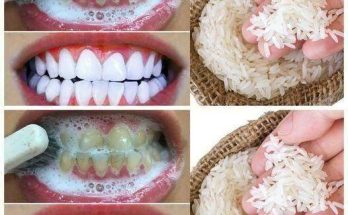Three’s Company continues to captivate audiences decades after it first aired, thanks to its unique blend of humor, memorable characters, and iconic cast. The show’s simple premise—Jack Tripper pretending to be gay to share an apartment with Janet Wood and Chrissy Snow—created endless comedic misunderstandings, making it a top-ten hit from 1977 to 1983. Although its humor is rooted in the norms of the 70s and 80s, some moments have recently sparked renewed discussions about their appropriateness by today’s standards.

A particular episode from Season 5, A Crowded Romance, has gone viral and reignited interest in the show. Known for its hilarious twists and misunderstandings, this episode features a love triangle involving Jack, Larry, and a woman they both unknowingly date at the same time. While the comedic chaos unfolds, one scene involving Jack and Janet has drawn fresh attention, sparking mixed reactions from fans.
In the clip, Janet encourages Jack to start his day with morning exercises. Jack jokes that he has already done “20 hair combs and two sets of teeth brushing” and doesn’t want to “overtrain.” Moments later, he gives Janet a playful nudge on her backside, prompting her to say, “I hate when you do that!” The scene, which was intended as lighthearted humor in the 1980s, has drawn divided responses online. Some fans view it as harmless and emblematic of the era’s humor, commenting, “It was funny, stupid humor! Unfortunately gone today.” Others have taken a more critical stance, calling Jack’s behavior inappropriate by modern standards.

The episode holds an interesting place in the show’s history. It was the first episode filmed for Season 5 but aired fifth due to scheduling conflicts caused by the 1980 Screen Actors Guild strike. Suzanne Somers, who played Chrissy Snow, does not appear in the episode. Her absence was initially due to a conflict with her stage show in Las Vegas, but by the time the episode aired, her well-publicized contract dispute over pay parity had begun. Somers had demanded a significant raise to match John Ritter’s salary, which ultimately led to her departure from the series. At the time, her stance on equal pay was seen as controversial, but it is now regarded as a pivotal moment in the ongoing conversation about gender equality in Hollywood.
Without Somers, Joyce DeWitt’s Janet became the central female figure in the episode, shining in her role and showcasing the chemistry she shared with John Ritter. Janet’s wardrobe and hairstyle in this episode, particularly her blue shorts and pink blouse, remain iconic among fans. DeWitt’s evolving hairstyles throughout the series have also been a topic of discussion. Her sleek, layered cut, crafted by New York hairstylist Harry King, was both chic and easy to maintain, inspiring countless women of the time to emulate her look.

While the playful nudge has drawn controversy, another detail from the episode has also caught fans’ attention. Some viewers believed they spotted the “top of the set” during a scene, but upon closer inspection, it turns out to be intentional decor—a nod to the retro design elements that defined the show’s aesthetic. Such moments remind viewers of the show’s charm and occasional quirks, which continue to spark conversations among fans.
Suzanne Somers’ departure from the series remains a significant moment in the show’s legacy. At the time, her demand for pay parity with Ritter was considered audacious, but it laid the groundwork for future discussions about equal pay in Hollywood. Despite her absence in later seasons, Chrissy Snow’s character and Somers’ comedic timing remain unforgettable.

Three’s Company endures as both a beloved sitcom and a cultural artifact of its time. It continues to evoke laughter and nostalgia while inviting reflection on how societal norms and humor have evolved. Whether you view it as a product of its era or a timeless classic, the show’s ability to spark conversations decades later is a testament to its lasting impact. Fans old and new continue to find joy in its episodes, celebrating the magic of ensemble comedy and the characters who brought it to life.



